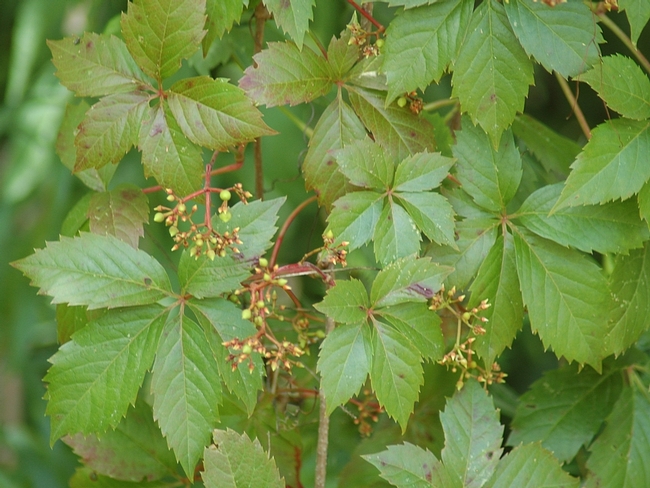Jan 20, 2021
Usually I write up little articles on plants I like, but this post is about a plant I've learned to detest since moving to Owens Valley: Virginia creeper.
Virginia creeper (Parthenocissus quinquefolia) is related to grapes. Except for the obviously different foliage it has a similar growth pattern. It is a vigorous growing vine that has a real will to live. Maybe too much.
It's a native to central and eastern North America, but is common in landscapes across the continent. Sometimes I would find it in forests in Arkansas, but it was usually in someone's yard.
Somehow Virginia creeper found its way to our area. Judging from the yards I see it in, it must have been popular about 50 years ago. Today it can be found in yards up and down Owens Valley. I have it in my own yard.
A plant I never gave much thought about, Virginia creeper usually serving a role in landscapes as a generic, boring vine. If you needed green stuff on a fence or wall with a little fall color, it's a plant that worked well for that purpose even if it was mostly ignored. It is hard to kill and spreads quickly, good characteristics for generic, green vines.
I have decided that I do not like Virginia creeper. Not one bit.
In my yard there are 3 patches of the stuff. Every year I have to spend an entire day untangling and removing hundreds of feet of vines from fences, flower beds, walls, and paths. It even grows inside the walls of my house under the siding all the way up to the eaves — and beyond! It has become a real nuisance.
This past year I grew a garden in a new spot. There was a small patch of unirrigated Virginia creeper on the adjacent fence. Each year it would grow some, eventually get wiped out by leafhoppers, and I'd pull it down in winter. With the irrigation provided to the garden, it took over everything. Some vines grew more than 25 feet this season!
Throughout the season I removed excess growth that I noticed, but it turned out to have grown below the tomatoes and tomatillos, out of sight. The vines bound up the trellises and made fall clean up a challenge. Raking was not possible until I removed every single vine.
In our area, Virginia creeper should be considered an undesirable species in landscapes. If you are offered it as a pass-along plant, decline as graciously as you can. Be firm, however. You don't want this plant. In a dry location it's not too bad of a plant if you don't mind the huge leafhopper infestation that arrives in summer. With water it becomes a real beast with few redeeming qualities.
Good news! It is possible to eliminate Virginia creeper. Continual pulling and digging often is successful. If you don't have any barriers like roots, paths or fenceposts, digging is usually the fastest way to make a dent. Chances are it will takes several tries to remove it. When it gets under paths, inside walls, or other hard-to-reach places, digging alone is unlikely to work. It will respond to systemic herbicides applied at the tail end of summer, along with cut stump treatments. (See this link for information on weed management in landscapes.)
If you need advice for eliminating your Virginia creeper patch, contact our helpline at immg@ucanr.edu.
